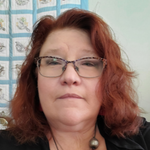Share
Counselors are continually trying to treat the chronic disease of addiction with an acute care model by delivering strong, evidence-based programs to people who are still in the throes of early recovery. That is, people who are still struggling with tracking, short-term memory, emotional regulation, poor attention span, and often poor self-efficacy. What I continue to observe working in the addiction field over the last thirty years is that we are delivering state-of the-art services designed to support neuroplasticity in an acute model to people with a chronic disease.
What happens when, in the first few weeks or months of recovery, patients cannot or will not practice mindfulness or meditation? What happens when they have learning disabilities prior to addiction, or are facing co-occurring mental health issues? What can we offer behaviorally that could stimulate the same neurological rewiring as cognitive restructuring through manuals and meditation?
I would propose that service, not evidence-based treatment, be considered as an additional intervention for similar neurological reasons. It is not simply “character building,” but brain building as well. Consider the following patient experience:
I was looking at my second strike when my cellie transferred to one of those boot camp recovery dorms, and it made me think. When I was honest with myself, I was tired. So I applied and got accepted into the program. I figured it would be an easier way to do my time. I was wrong and I was almost rolled up twice, being a knucklehead.
When I got out, I was transferred to a ninety-day program in the community to do the rest of my time. There was this OG in the program gimped up from a gunshot. He was pretty burnt mentally too. I was put in his room, which pissed me off at first because I had to help carry him to the bathroom because he needed to use his crutches. I had to help him with his room chores and carry his laundry. At first, he had to ask for my help because I would forget. But after a while, I started doing stuff without thinking about it. My counselor said at my graduation that she was struck by how helpful I was to the house. “Helpful” was never a word I had ever heard used about me! I’ve been out three years now, I’m becoming a chemical dependency counselor, and I sometimes think that helping that old guy changed me more than anything the program taught me.
In his book The Brain That Changes Itself, Norman Doidge states, “The idea that the brain can change its own structure and function through thought and activity is, I believe, the most important alteration in our view of the brain since we first sketched out its basic anatomy …. Like all revolutions, this one will have profound effects” (2007). We are developing a clearer understanding of how the brain responds to treatment, and we know we can encourage the brain to increase its neurogenesis and neuroplasticity as important aspects to the recovery process.
Cognition in Early Recovery
The cognitive impact of addiction is most acute in early treatment, which is the time we are most heavily focusing on evidence-based treatment interventions. Patients entering substance abuse treatment usually experience the most severe cognitive impairment in the first few weeks after abstaining from their drug of choice. This high level of impairment interferes with recovering individuals’ ability to benefit from psychoeducational treatment classes or skill-development curricula. While there is considerable variety in the severity and types of cognitive impairment found in newly recovering patients, problems with attention, memory, and executive functions like storing, retrieving, and using information are very common. Since treatment requires sustained attention, remembering what is learned, integrating that knowledge, and applying it to recovery, impairment in underlying cognitive processes makes successful treatment less likely.
The idea for this article hit me when I was listening to NPR one morning and heard about a recent discovery by Abigail A. Marsh, PhD, an assistant professor of psychology at Georgetown University. Dr. Marsh found that altruistic kidney donors have different brains: the amygdala is larger. Consistent with these findings, other research has determined that psychopaths have smaller amygdala and are therefore less able to empathize with others. Dr. Marsh and her colleagues used structural and functional brain imaging to compare extraordinary altruists, specifically altruistic kidney donors, and controls. Altruists exhibited variations in neural anatomy and functioning that represent the inverse of patterns previously observed in psychopaths, who are unusually callous and antisocial. These findings suggest that extraordinary altruism represents one end of a caring continuum and is supported by neural mechanisms that underlie social and emotional responsiveness (Marsh et al., 2014).
I was intrigued by the phrase “neural mechanisms that underlie social and emotional responsiveness,” which sent me on a research review. While Dr. Marsh had detected increased amygdala size in altruists, I wondered if altruism, particularly via service, could increase amygdala volume. It makes intuitive sense to me that it would be possible to introduce service to others to intentionally stimulate new neural pathways. There is certainly data linking Twelve Step service to ongoing sobriety; one article found that Twelve Step programs and spiritual support played a major role in sustaining long-term recovery (Stokes et al., 2018).
Key Studies on Alcoholics and Service
There has been a strong body of work, led by researcher Maria Pagano, demonstrating the importance of service to the ongoing sobriety of alcoholics (Pagano et al., 2011). In an investigation involving data from Project MATCH, Pagano and colleagues demonstrated that 94 percent of alcoholics who began to help other alcoholics at any point during the fifteen-month study period continued their helping behaviors (Pagano, Zemore, et al., 2009). In another study, the second pattern that emerged pertains to the course of general versus Alcoholics-Anonymous-specific helping behaviors (Pagano et al., 2010). Lower levels of general helping while drinking increased to moderate levels at one year and at twenty years sober.
This finding parallels the pattern found in a similar study of seventeen alcoholics with 20.7 years of sobriety and long histories of AA participation (Pagano et al., 2013). Kurtz and Fisher (2003) noted a gradual progression of community activities that followed involvement in Twelve Step organizations. Pagano, Zeltner, and colleagues noted, “Thus involvement in AA contexts appears to lead to external involvement in other life settings. In contrast to sustained moderate levels of community life participation across early and long-term sobriety” (2009).
AA service involvement after several decades of sobriety was higher than levels reported in early sobriety. This suggests that participation levels in some AA service activities may be higher as more experience is accrued with time sober. Supplementing this finding, recovering alcoholics consistently rated helping other alcoholics as contributing a lot to staying sober, whereas helping at home or work contributed very little. In a similar study, very few old-timers (29 percent) mentioned staying sober as their motive for community involvement (Kurtz & Fisher, 2003).
Integrating Service into a Treatment Plan
Is something happening at the neurological level that creates an evidence-based reason to purposefully integrate service into individualized treatment plans?
According to an article by Richard Davidson, PhD, and Bruce McEwen, PhD, “Research is beginning to document the impact of explicit interventions designed to decrease stress and promote prosocial behavior and well-being on brain structure and function” (2012). These studies are consistent with the basic research in demonstrating increases in specific sectors of prefrontal cortex activation and decreases in amygdala activation (Davidson & McEwen, 2012). These functional alterations are accompanied by structural changes that show increases in the prefrontal cortex and decreases in amygdala volume. The implications for neural circuitry changes as a result of acts of service, to the extent that service and prosocial acts become automatic behaviors, are profound for long-term recovery.
Resilient people realize that they are “connected” through compassion (to self and others) and through community (reaching out and receiving help). Neurologically, the research suggests that at least two connections are relevant:
- The right-brain with the left-brain through the corpus callosum
- The frontal cortex with the emotional brain through specific limbic-cortical pathways
Timing, planning, having social resources, and self-monitoring all appear to be important. Again, prosocial behaviors — helping others, being altruistic, paying it forward, showing appreciation, allowing others to help us — seem to work here.
This leads me to ask, again, how can we stimulate these changes through behaviors like service to others? A key question replete with both theoretical and practical significance is whether explicit interventions or training designed to foster prosocial behavior and well-being, or more naturally-occurring forms of positive social interaction and social support, can actually induce neuroplasticity changes in the brain.
References
- Davidson, R. J., & McEwen, B. S. (2012). Social influences on neuroplasticity: Stress and interventions to promote well-being. Nature Neuroscience, 15(5), 689–95.
- Doidge, N. (2007). The brain that changes itself: Stories of personal triumph from the frontiers of brain science. New York, NY: Viking Penguin.
- Kurtz, L. F., & Fisher, M. (2003). Participation in community life by AA and NA members. Contemporary Drug Problems, 30(4), 875–904.
- Marsh, A. A., Stoycos, S. A., Brethel-Haurwitz, K. M., Robinson, P., VanMeter, J. W., & Cardinale, E. M. (2014). Neural and cognitive characteristics of extraordinary altruists. Proceedings of the National Academy of Sciences of the United States of America, 111(42), 15036–41.
- Pagano, M. E., Krentzman, A. R., Onder, C. C., Baryak, J. L., Murphy, J. L., Zywiak, W. H., & Stout, R. L. (2010). Service to others in sobriety (SOS). Alcoholism Treatment Quarterly, 28(2), 111–27.
- Pagano, M. E., Post, S. G., & Johnson, S. M. (2011). Alcoholics-Anonymous-related helping and the helper therapy principle. Alcoholism Treatment Quarterly, 29(1), 23–34.
- Pagano, M. E., White, W. L., Kelly, J. F., Stout, R. L., Carter, R. R., & Tonigan, J. S. (2013). The ten-year course of AA participation and long-term outcomes: A follow-up study of outpatient subjects in Project MATCH. Substance Abuse, 34(1), 51–9.
- Pagano, M. E., Zeltner, B. B., Jaber, J., Post, S. G., Zywiak, W. H., & Stout, R. L. (2009). Helping others and long-term sobriety: Who should I help to stay sober? Alcoholism Treatment Quarterly, 27(1), 38–50.
- Pagano, M. E., Zemore, S. E., Onder, C. C., & Stout, R. L. (2009). Predictors of initial AA related helping: Findings from Project MATCH. Journal of Studies on Alcohol and Drugs, 70(1), 117–25.
- Stokes, M., Schultz, P., & Alpaslan, A. (2018). Narrating the journey of sustained recovery from substance use disorder. Substance Abuse Treatment, Prevention, and Policy, 13(1), 35.

Mary Crocker Cook, PhD, DMin, LMFT, LAADC
Mary Crocker Cook, PhD, DMin, LMFT, LAADC, developed and is the current program coordinator for the San Jose City College Alcohol and Drug Studies Program. She is a published author at marycrockercookbooks.com and offers CEUs for RADT, CADC, LAADC at counselorsceu.com. Crocker Cook is a current CCAPP board member for District 7 and on the board of the nonprofit Many Paths One Destination, the United Nations for recovery.









 Counselor Magazine is the official publication of the California Association of Addiction Programs and Professionals (CCAPP). Counselor offers online continuing education, article archives, subscription deals, and article submission guidelines. It has been serving the addiction field for more than thirty years.
Counselor Magazine is the official publication of the California Association of Addiction Programs and Professionals (CCAPP). Counselor offers online continuing education, article archives, subscription deals, and article submission guidelines. It has been serving the addiction field for more than thirty years.